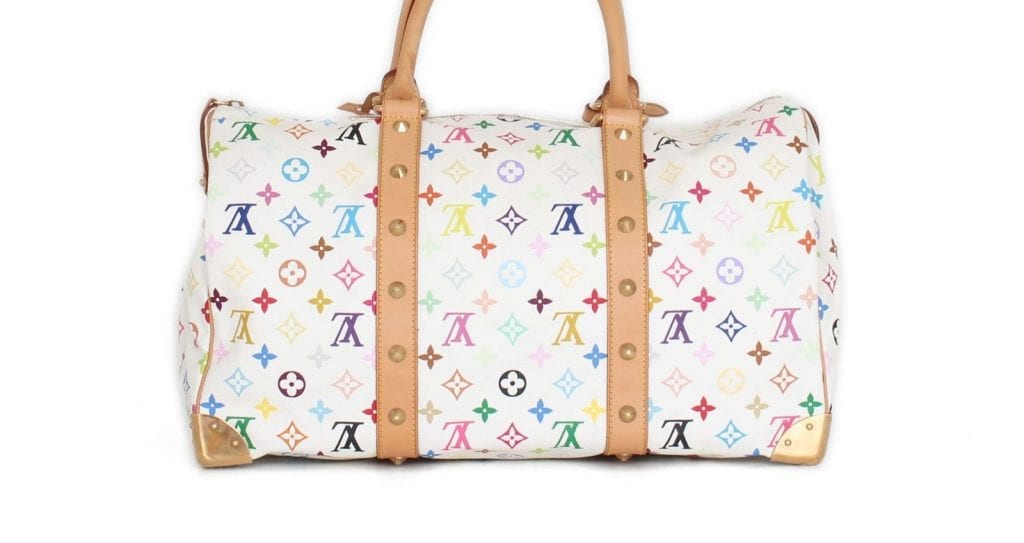It was the opening evening of an exhibit featuring the work of Japanese artist – and frequent Louis Vuitton collaborator – Takashi Murakami at the Brooklyn Museum of Art. For a 3 month period beginning in April 2008, the museum would offer the “most comprehensive retrospective to date of the work of Mr. Murakami, including more than ninety works in various media that span the artist’s entire career.” But before they could get inside of the sweeping 560,000 square-foot museum for the evening’s soirée, gala-goers – including Louis Vuitton’s then-creative director Marc Jacobs and LVMH Moët Hennessy Louis Vuitton chairman Bernard Arnault – had to bypass a handful of “ratty stalls, the type one sees all over Chinatown,” as the New York Times’ Guy Trebay put it at the time.
Among the wares inhabiting those Chinatown-esque pop-ups – which ranged from keychains and wallets to bucket bags and Speedy bags all covered in Louis Vuitton x Takashi Murakami’s legally-protected (by copyright and trademark law) multicolored print – were handfuls of Vuitton and Murakami’s new Monogramouflage-covered canvases. With price tags of $6,000, the individual squares of canvas were expensive for “fakes,” yes, but still a steal compared to what you would otherwise pay for such a work of art.
The stalls, which were being manned by a handful of unassuming vendors, would not be out of place on Canal Street or any heavily-trafficked street corner in New York City. But unlike their city-wide counterparts, these makeshift stalls and “the characters [manning them] were playacting, and the goods laid out on trays and tarps were real Vuitton accessories,” per Trebay.
Yes, ten years before Diesel set up a “counterfeit” shop on Canal Street as a means of promoting its brand during New York Fashion Week, and before Off-White produced a set up of makeshift fake-sellers outside of its Spring/Summer 2017 show venue in Paris, Louis Vuitton took on the fake trade in Brooklyn, New York.
The brainchild of the Brooklyn Museum of Art’s former Director Arnold Lehman and Louis Vuitton’s Chairman and CEO at the time, the now-late Yves Carcelle, the popup shops, so to speak, were actually more performance art than legally-problematic scheme. And the ploy, itself, was genius, in large part given the brand that was being targeted. While Louis Vuitton holds the title of the world’s most valuable luxury brand, it is also one the most – if not the most – counterfeited brands in fashion, and this is something that it takes seriously.
According to a statement from Louis Vuitton, “The fight against counterfeiting is a long-term element” of its worldwide strategy, as the effects of counterfeiting “go far beyond buying a cheap bag on a street corner.” The act of counterfeiting “undermines the investment and knowledge made to develop the company,” according to the Paris-based brand. And with that in mind, the brand’s “intellectual property department manages over 12,000 intellectual property rights including trademarks, designs, and copyrights with the support of 250 agents around the world.
As for Mr. Murakami, he was on board, too. Like the “fake” handbags, the purpose of the “counterfeited” Monogramouflage canvases was, in Murakami’s view, to “bring art to the hoi polloi, people in no position to lay out the $1.5 million that another French billionaire, François Pinault, paid for a 23-foot Murakami statue of the space alien Mr. Pointy in 2003,” per Trebay.
In his own words, Murakami explained the stunt as a way to ensure that his work – even in small quantities – is relatively affordable. “I always want the art to be accessible.”











